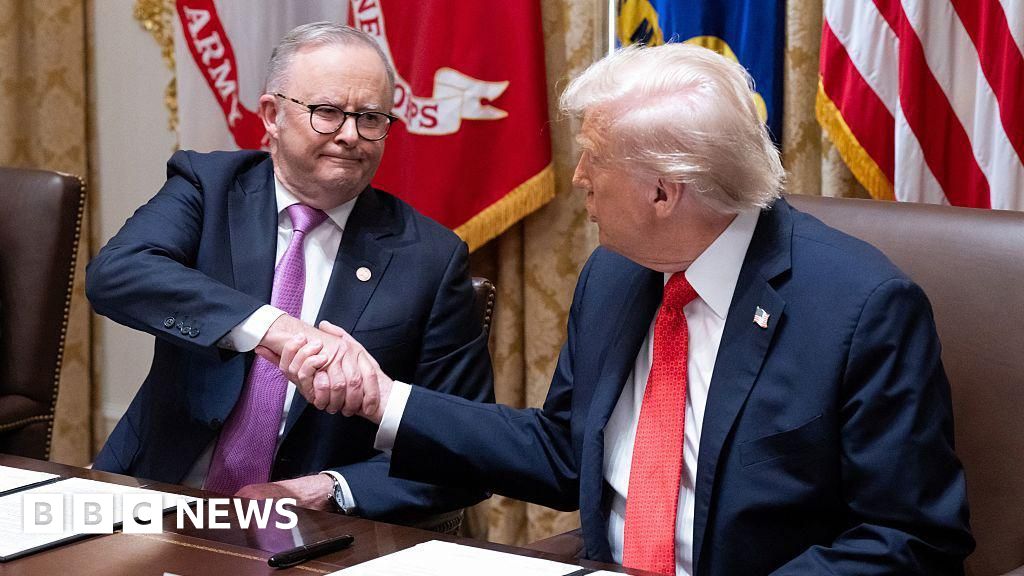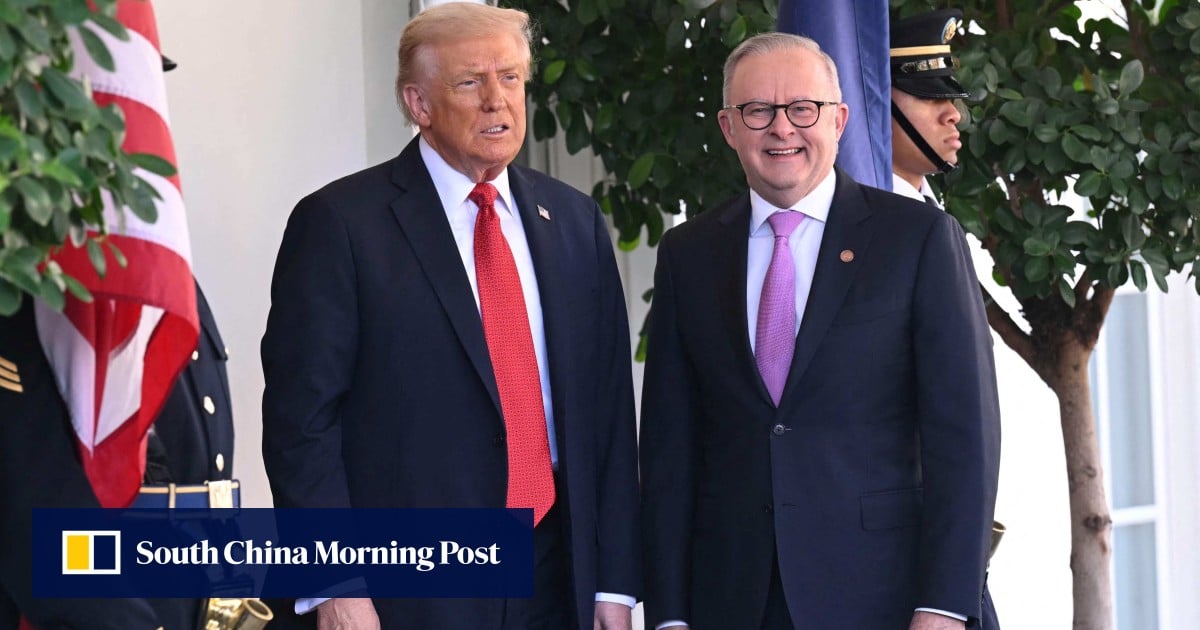China’s approach to Artificial Intelligence offers American policymakers many valuable lessons.
The United States has faced defining moments before, such as two world wars, a cold war, economic stagnation in the 1970s, the rise of Japan in the 1980s, and the aftermath of 9/11. But today’s competition with China is something different. The People’s Republic is a rival that matches our economic scale, technological strength, global influence, and geopolitical aspirations. Yet, U.S. policymakers lack a coherent strategy to manage this unprecedented challenge. Instead, the country finds itself in a dangerous cycle of reactive decision-making that plays directly into Beijing’s hands.
American statecraft increasingly defaults to outward-facing tools that include coercion through economic sanctions and the threat of military action. While somewhat effective in the past, this approach is insufficient for the China challenge. In essence, the United States is reacting to China’s moves instead of pursuing its own positive agenda. Breaking free from this pattern means that U.S. policymakers must reimagine what success looks like beyond maintaining the current global order.
The United States needs new strategies, supported by research and continuous monitoring, to evaluate China’s competitive moves, track its technological progress, assess economic risks, and discern patterns in its dealings with other countries. Better measures and understanding of China’s own challenges can inform a proactive vision for securing long-term success amid geopolitical competition. Our current approach—a reactive patchwork of feel-good solutions that treats symptoms while ignoring the underlying causes—is a formula for defeat.
Hubris versus Reality
It is also worth recognizing how China shapes our options through overt and subtle means. For example, U.S. companies doing business in China face pressure to cede intellectual property. In the battle for minds, China coerces Hollywood to alter content, forces internet search providers to skew results, and employs aggressive legal tactics to silence critics, such as threatening U.S. researchers with lawsuits and persecuting scholars who document human rights abuses. Unlike America, China regards law as a tool to advance national interests and competition as a winner-take-all struggle. This is the reality we must learn to face.
Moreover, the notion that we can maintain global leadership indefinitely by slowing China’s rise through export controls and other impediments is shortsighted. China’s nuclear capability and peer status in artificial intelligence (AI) demonstrate the folly of relying on such tactics. The recent buzz around DeepSeek AI models from China confirms this reality. This wasn’t surprising to those following global AI trends—it simply reflects how research knowledge spreads. Computer engineers can replicate algorithms, and AI expertise exists in a global context rather than concentrating in one country.
The costs of misreading China are high. War, pathogen outbreaks, and infrastructure attacks loom as worst-case scenarios. Mitigation of these types of risks requires continuous engagement and trust-building. But more fundamentally, it demands we abandon the hubris that has colored our attitude toward China and much of the former “third world.”
We must acknowledge that the United States is no longer unchallenged as the world’s most powerful nation. We cannot roll time back to the mid-1990s or go on imagining that “slowing China down”—even if we could—will guarantee U.S. security. An effective China strategy must account for this new multipolar reality rather than cling to outdated assumptions about the inevitability of American primacy.
China’s Achilles Heel
To be sure, China has its own vulnerabilities. The Chinese Communist Party survives, in part, through a network of surveillance and oppression that penalizes out-of-the-box thinking and expression. Party repression is offset by an implicit bargain with the people: continued prosperity in exchange for obedience. This bargain becomes shaky when the contradictions of dictatorship and a command economy begin to show, or in traditional Chinese terms, when the ruler loses the “mandate of heaven.”
We are seeing cracks in this foundation today. Young people struggle to find jobs. The real estate sector, where Chinese families store their wealth, is in trouble. Local governments that borrowed heavily are drowning in debt. China’s population is aging rapidly, with fewer workers to support more retirees. These pressures create dangerous dynamics for China’s leaders who are already dealing with classic late-stage dynastic portents such as environmental disasters, ethnic discontent, corruption in the civil and military bureaucracies, and unfriendly neighboring states.
If winning is the goal, there are opportunities for the Trump administration to exploit these weaknesses by waging the same psychological warfare China practices against the United States and its allies through its “United Front” operations or, at minimum, by driving home the distinction between the Chinese nation and the elite who rule it. Another area where immediate advantage can be gained is by stemming the unwanted leakage of foreign technology that helps propel China’s scientific growth and by incentivizing parties who engage in “collaborative” ventures with China to take U.S. interests seriously to heart.
A Way Forward
Leveraging China’s weaknesses to tilt the balance in the United States’ favor moves U.S. policy away from reaction toward defined goals. But it still falls short of what is needed. At best, it buys the United States time to resolve our own contradictions and work toward unleashing a fresh new wave of talent and innovation. The following tasks are components of what is needed to outpace China.
Firstly, the Trump administration, corporate leaders, and philanthropists should pursue unprecedented levels of public-private investment in talent development, including industrial skills that do not require college degrees, and in high-risk/high-reward research and development.
We propose that the scaffolding for this industrial transformation lies in large part in the American heartland: reimagining communities across the nation as hubs for advanced manufacturing, new service roles, and future innovative ideas, many powered by the creation of human plus AI teams. It is crucial that the United States bet on research and its application into technologies like AI in ways that provide American citizens with new opportunities.
Secondly, technology is insufficient to ensure U.S. hegemony. China understands the need to apply discoveries to use cases and has honed its skill at doing so for millennia. At present, China operates hundreds of state-funded “commercialization centers” nationwide—well beyond the coastal hubs—to facilitate the translation of new ideas into products. It also fields “complete AI industry chains” that make computing and AI accessible to local companies, including those in the interior.
DeepSeek’s open-sourcing approach exemplifies this diffusion strategy. By releasing competitive models publicly, China simultaneously demonstrates technical competence, encourages domestic application development across sectors, and gains global influence in the open-source AI community—all while gathering valuable feedback for future improvements. This creates a virtuous cycle of development and deployment that magnifies China’s strategic advantages in applied AI regardless of who originated the foundational concepts. While competing with China, the Trump administration should absorb these and other lessons that China offers.
Finally, the Trump administration needs a viable mechanism to gather and analyze foreign scientific data similar in spirit, if not scale, to the apparatus China uses to baseline its own development. Our present efforts to track foreign science through agencies specialized in classified collection are ill-suited to the task of monitoring information “hiding in plain sight.” This window into China’s technical infrastructure will help inform investment decisions and further research security by exposing gaps that competitors seek to fill through illicit transfers.
Realizing Our Untapped Potential
To fully realize the potential of this new era, the United States must invest heavily in people. This means fostering AI literacy across all levels of education, creating pathways for workers to adapt and acquire new skills, and promoting lifelong learning initiatives. We need to empower educators, support community colleges and vocational training programs, and ensure that the benefits of technological progress are broadly cultivated. Moreover, this effort cannot solely rely on the federal government. It requires a whole-of-nation approach, enlisting the innovative power of private industry, state and local governments, educational institutions, and community organizations to create a dynamic talent pipeline ready for the jobs of the future.
Imagine, as China has, former factory towns transformed into centers of new blue-collar jobs—well-paying positions that do not require a four-year college degree, yet are not excluded from the knowledge economy. These are not your grandfather’s manufacturing jobs, nor are they traditional tech jobs. They are something new: workers using AI to operate advanced 3D printing systems, maintenance specialists keeping robot-assisted production lines running, and production managers using AI to optimize supply chains.
This isn’t just about manufacturing. Picture nurses using AI to provide better patient care, call centers using AI to solve complex problems, and skilled trades workers using AI for real-time guidance on repairs. The Trump administration can incentivize the creation of local manufacturing hubs where AI optimizes production and American workers manage it all. This would reduce our dependence on overseas supply chains while creating good jobs in communities that need them most.
This focus on strengthening our domestic capabilities does not imply a retreat from the world stage. In fact, it is through a position of renewed strength that America can most effectively engage with its allies, uphold the principles of a rules-based international order, and work with other nations, including China, when possible, to address global challenges. Maintaining strong international partnerships will be crucial to our long-term success, and a more productive form of engagement with China, focused on areas of mutual interest, will help avoid conflict.
The Time to Act Is Now
Critics will rightfully point out the challenges. Yes, AI technology is still developing and could disappoint. Yes, some workers may struggle to adapt to these new tools. And yes, previous attempts to revitalize American manufacturing have fallen short of their promises. These are concerns that demand careful consideration. However, the risks of inaction far outweigh the challenges of seizing initiative. While other nations—China especially—race to implement AI in their industries, America cannot afford to wait for perfect conditions to develop well-crafted capabilities in an environment that increases American competitiveness.
Just as the information economy helped America overcome the economic malaise of the 1970s, we now have an opportunity to innovate and manufacture our way into a new era of prosperity. But unlike the tech boom that concentrated wealth in a few coastal cities, this AI-powered manufacturing renaissance could spread opportunity across the heartland, adding a measure of creativity and social stability that totalitarian states cannot aspire to.
These propositions are not hypothetical nor dependent on unrealized AI promises. China is currently engaged massively in a state-sponsored effort to infuse entire municipalities with AI to optimize production, turbocharge education, and support social governance, beginning with the provincial city of Wuhan and radiating through the rest of the nation. The competitive gains this restructuring will bring to China need to be offset by investment in our own AI-based knowledge and industrial infrastructures.
Success won’t come from trying to stop China’s rise—that’s neither possible nor necessary. Instead, the Trump administration will succeed by rebuilding American productive capacity to create opportunities for all Americans. This approach requires patience and sustained investment, but the alternative—pinning our hope on abstract knowledge and reacting to China’s moves while more American communities decline—is far worse.
The time to execute this strategy is now. Our goal should be nothing less than leading the world in human-AI collaboration while rebuilding American scientific research and manufacturing might. That’s a future worth fighting for.
About the Authors:
Dewey Murdick is the Executive Director at Georgetown University’s Center for Security and Emerging Technology (CSET).
William Hannas is the Lead Analyst at Georgetown University’s Center for Security and Emerging Technology (CSET).
Image: Gorodenkoff / Shutterstock.com.


